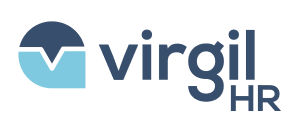Hiring the right person is just the first step. A strong onboarding checklist ensures your new employee feels welcome, becomes productive faster and helps you stay compliant with complex legal requirements.
Here’s how to build a checklist that supports retention, culture and compliance from day one.
Why Onboarding Checklists Aren’t Optional
Over one-third of newly hired employees quit within their first year. That kind of turnover damages retention and morale and the cost of replacing an employee can climb to 1.5–2× their annual salary, especially for specialized roles.
Compliance Tip: Missing required new-hire paperwork or delaying mandated training (like anti-harassment in certain states) can expose your organization to significant penalties. A checklist helps prevent costly oversights.
Core Elements of an Onboarding Checklist
An onboarding checklist should cover five pillars of the employee experience:
- Legal and policy compliance (forms, notices, required training)
- Clear job expectations and performance goals
- Building employee confidence in their role
- Embedding company culture and values
- Creating strong connections with managers and peers
Must-Have Documents and Legal Requirements
Onboarding paperwork is non-negotiable. At minimum, employers must provide and collect:
- Federal forms (W-4, I-9) and any state-specific forms
- Payroll setup (direct deposit authorization)
- Signed acknowledgment of the employee handbook
- Confidentiality, nondisclosure or non-compete agreements where lawful
- Benefits enrollment and disclosures (health insurance, retirement, leave policies)
Compliance Tip: Non-compete agreements are under active review by the FTC, and many states have already restricted or banned them. Always check current laws before issuing.
Training, Culture and Early Goals
Effective onboarding goes beyond paperwork. Your checklist should include:
- Orientation on mission, values and policies
- IT setup (hardware, software, accounts)
- Facility or virtual tours
- Mentor assignment or peer buddy program
- Setting 30-60-90 day SMART goals
Compliance Tip: Some states require specific new-hire training (e.g., harassment prevention in California, Connecticut, New York and Illinois). Failing to provide these can expose employers to liability.
Remote and Hybrid Considerations
Onboarding for remote and hybrid employees must ensure equitable access to tools and culture:
- Virtual orientation and onboarding resources
- Remote IT setup and account access
- Scheduled video introductions with team members
- Clear communication guidelines for remote collaboration
Compliance Tip: Wage and hour compliance applies to remote workers under the FLSA and state laws. Employers must track hours accurately and comply with overtime and break requirements.
Why Quality Onboarding Matters
- Only 12% of employees say their employer does a great job onboarding
- About 20% of new hires quit within the first 45 days if onboarding is weak
- Poor onboarding hurts retention, morale and compliance readiness
Compliance Tip: Handbooks, notices and policies must be updated as laws change. Employers must ensure that all new hires receive the most current version.
Continuous Review and Improvement
Review your onboarding checklist at least annually. Laws evolve, workplace models shift and employee expectations change. Keeping your process current protects compliance and strengthens retention.
Simplify the Process with VirgilHR
Onboarding should be smooth for new hires and stress-free for HR. VirgilHR automates compliance with real-time, location-specific guidance on required forms, notices and training. Our e-signature tool ensures secure completion and storage of paperwork, reducing errors and saving time.
Schedule a demo today to see how VirgilHR can simplify onboarding and keep your workplace compliant.
